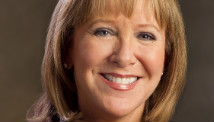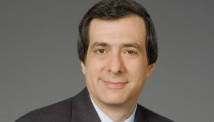MIAMI GARDENS, Fla. (AP) — Barely taking time to celebrate their latest national championship, Nick Saban and the Alabama Crimson Tide are ready to get back to work.
That's how they make it look so easy.
In what must be an increasingly frustrating scene for the rest of college football, another season ended with Saban and his players frolicking in the middle of a confetti-strewn field. Eddie Lacy ran all over Notre Dame, AJ McCarron turned in another dazzling performance through the air, and the Tide defense shut down the Fighting Irish until it was no longer in doubt.
The result was a 42-14 blowout in the BCS title game Monday night, not only making Alabama a back-to-back champion, but a full-fledged dynasty with three crowns in four years.
This one was especially satisfying to Saban.
"People talk about how the most difficult thing is to win your first championship," he said. "Really, the most difficult one to win is the next one, because there's always a feeling of entitlement."
Rest assured, that feeling won't last long in Tuscaloosa.
While Saban insisted he was "happy as hell" and "has never been prouder of a group of young men," it was hard to tell. He was already talking about reporting to the office Wednesday morning and getting started on next season.
"One of these days, when I'm sitting on the side of the hill watching the stream go by, I'll probably figure it out even more," Saban said. "But what about next year's team? You've got to think about that, too."
So, in short order, he'll be talking with underclassmen about entering the NFL draft, making sure everyone goes back to class on schedule, and getting started on that next depth chart.
"The Process," as he calls it, never stops.
"We're going to enjoy it for 24 hours or so," Saban said.
No. 2 Alabama quieted the top-ranked Irish on the very first drive — so much for waking up the echoes — and could've started the celebration at halftime, heading to the locker room with a commanding 28-0 lead.
The Tide (13-1) pushed it out to 35-0 midway through the third quarter on the third of McCarron's four touchdown passes, a 34-yarder to Amari Cooper with a defender nowhere in sight.
At that point, Alabama was on a 69-0 blitz in national title games, having scored the last 13 points in its 2010 triumph over Texas and blanked LSU 21-0 for last year's BCS crown.
When Everett Golson finally scored for Notre Dame (12-1) with about 4 minutes remaining in the third, it snapped a scoreless stretch of nearly two full games — 108 minutes and 7 seconds — by the Tide.
"It was just a complete game by the offense, defense and special teams," said Alabama linebacker C.J. Mosley, the defensive MVP with eight tackles, one of them behind the line.
Despite the dazzling numbers by McCarron — 20 of 28 for 264 yards — he was denied a second straight offensive MVP award in the title game. That went to Lacy, who finished with 140 yards rushing on 20 carries and scored two TDs. Not a bad finish for the junior, who surely helped his status in the NFL draft should he decide to turn pro.
Lacy also was MVP of the Southeastern Conference championship game, rushing for a career-best 181 yards in the thrilling victory over Georgia that gave Alabama a chance to repeat as champion.
The Tide will have some big holes to fill, no matter who decides to leave school early, with offensive tackle D.J. Fluker and cornerback Dee Milliner also pondering their draft prospects. There's not a lot of seniors on the roster, but All-America linemen Barrett Jones and Chance Warmack and safety Robert Lester are among those who definitely won't be back.
But Alabama had some huge holes to fill a year ago, too, with five players drafted in the first 35 picks.
That worked out just fine.
The Crimson Tide wrapped up its ninth Associated Press national title, breaking a tie with Notre Dame for the most by any school and gaining a measure of redemption for a bitter loss to the Irish almost four decades ago: the epic 1973 Sugar Bowl in which Ara Parseghian's team edged Bear Bryant's powerhouse 24-23.
"The process is ongoing," said Saban, tightlipped as ever and showing little emotion after the fourth BCS national title of his coaching career. "We have a 24-hour rule around here. We enjoy everything for 24 hours."
Notre Dame went from unranked in the preseason to the top spot in the rankings by the end of the regular season, winning two games in overtime and three other times by seven points or less.
But the long wait for a championship — the Irish haven't finished No. 1 since 1988 — will have to wait at least one more year.
"They just did what Alabama does," moaned Manti Te'o, Notre Dame's star linebacker and Heisman Trophy finalist, trying to digest an embarrassing loss in his final college game.
Golson will be back.
He completed his first season as the starter by going 21 of 36 for 270 yards, with a touchdown and an interception. But the young quarterback got no help from the running game, which was held to 32 yards — 170 below its season average.
"We've got to get physically stronger, continue close the gap there," said Brian Kelly, the Irish's third-year coach. "Just overall, we need to see what it looks like. Our guys clearly know what it looks like now — a championship football team. That's back-to-back national champions. That's what it looks like. That's what you measure yourself against there. It's pretty clear across the board what we have to do."
Kelly vowed this was only beginning, insisting the bar has been raised in South Bend no matter what the outcome.
"We made incredible strides to get to this point," he said. "Now it's pretty clear what we've got to do to get over the top."
Alabama is already there but still longing for more, not content even after the second-biggest rout of the BCS era that began in 1999. The only title game that was more of a blowout was USC's 55-19 victory over Oklahoma in the 2005 Orange Bowl, a title that was later vacated because of NCAA violations.
You could almost hear television sets around the country flipping to other channels as Alabama poured it on, a hugely anticipated matchup between two of the nation's most storied programs reduced to a laugher when the Tide scored on its first three possessions.
"We're going for it next year again," said offensive tackle Cyrus Kouandijo, only a sophomore and already the owner of two rings. "And again. And again. And again. I love to win. That's why I came here."
___
Follow Paul Newberry on Twitter at www.twitter.com/pnewberry1963


